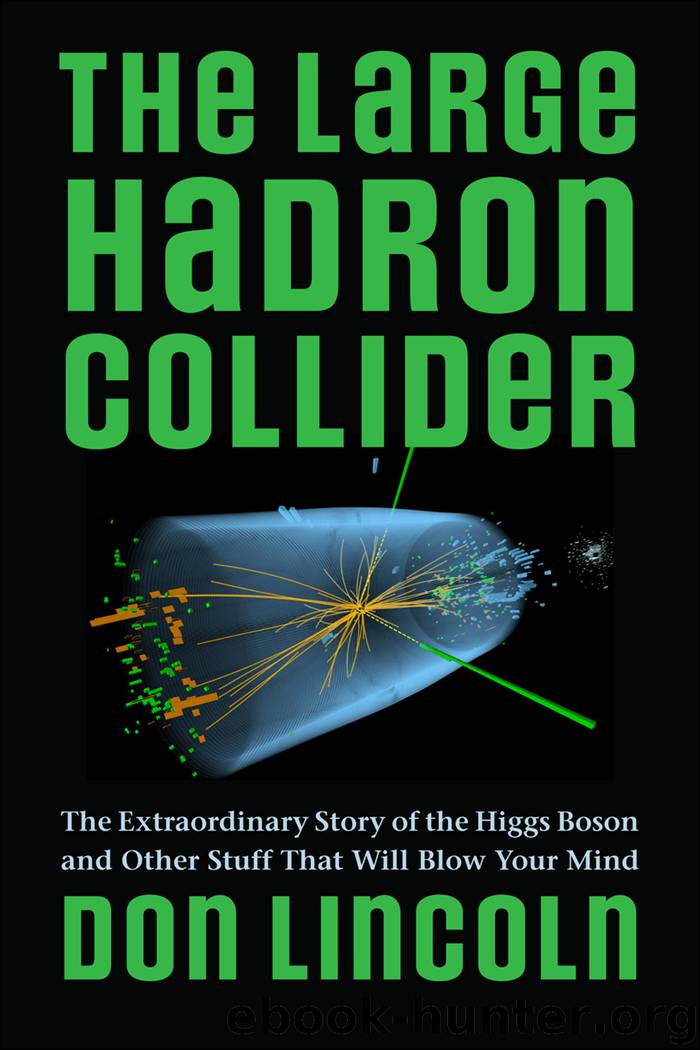The Large Hadron Collider by Don Lincoln

Author:Don Lincoln
Language: eng
Format: epub
Publisher: Johns Hopkins University Press
Published: 2014-04-15T16:00:00+00:00
Figure 5.6. The damage to the LHC was considerable. Top, a vaporized copper conductor. This damage is localized, although there were several instances like this. Bottom, damage to the connections between two magnets weighing tens of tons with the flexible cover off (left) and on (right). The helium released moved the magnets several tens of centimeters and distorted all of the delicate interconnections. Figure courtesy of CERN.
The Reaction
The first official conversations began at the Chamonix workshop in early 2009. This workshop, held in the shadow of the imposing Mont Blanc, is an annual getaway for the CERN leadership to assess the state of affairs at that organization. In an era dominated by the LHC, it is natural that the discussions were focused on that topic; especially after the unfortunate incident of September 2008. Representatives from the experiments, as well as from the various national funding agencies, were present.
Philippe Lebrun was the chair of the task force investigating the incident and presented the summary report. However, there were many other, more detailed reports by the various experts. There was a lot to absorb, especially for the new CERN director general, Rolf-Dieter Heuer. He had taken over just a month previously from Robert Aymar. While the earlier directors presided over the construction of the LHC, it was Heuer who would have to navigate the future waters. Many options were discussed, including whether it made sense to run with lower energy beams. No decision was made at Chamonix, but a clear path was laid to better investigate the options. It would take more information for Heuer to make a decision.
Meanwhile, back at CERN, the technical teams were continuing to effect repairs on the damaged equipment. The damage extended over 2,400 feet (750 meters). Ultimately fifty-three magnets, each weighing tens of tons, were removed for cleaning and repair. Eight others were cleaned in situ. But even the undamaged magnets, far from sector 34, required attention. Cautiousness dictated that all of the solder splices in the accelerator be tested. Nobody wanted to chance another incident. Further, many improvements were undertaken to mitigate the effects of any possible future problems. Pressure relief valves were improved on many magnets, and instrumentation was added to sense and respond to trouble.
Stories of the LHC’s woes were common in the press and even occasionally became comical. A mundane incident in a power station that caused the electricity to go out was reported as being caused by a bird dropping a piece of bread into the transformer. The evidence for the “saboteur bird” wasn’t particularly strong, but it made for an excellent story and so made it into the blogosphere. Then there was the theoretical physics paper that said that perhaps the universe didn’t want the Higgs boson to be discovered and, when it was discovered some time in the future, this caused a rift in the space-time continuum. This rift somehow involved some kind of time travel to keep breaking the LHC to make sure the Higgs boson wasn’t discovered after all.
Download
This site does not store any files on its server. We only index and link to content provided by other sites. Please contact the content providers to delete copyright contents if any and email us, we'll remove relevant links or contents immediately.
| Atomic & Nuclear Physics | Particle Physics |
The Complete Stick Figure Physics Tutorials by Allen Sarah(7336)
Secrets of Antigravity Propulsion: Tesla, UFOs, and Classified Aerospace Technology by Ph.D. Paul A. Laviolette(5330)
Thing Explainer by Randall Munroe(3905)
The River of Consciousness by Oliver Sacks(3571)
The Order of Time by Carlo Rovelli(3162)
How To by Randall Munroe(3074)
A Brief History of Time by Stephen Hawking(2991)
I Live in the Future & Here's How It Works by Nick Bilton(2958)
What If?: Serious Scientific Answers to Absurd Hypothetical Questions by Randall Munroe(2667)
The Great Unknown by Marcus du Sautoy(2661)
Midnight in Chernobyl by Adam Higginbotham(2515)
Blockchain: Ultimate Step By Step Guide To Understanding Blockchain Technology, Bitcoin Creation, and the future of Money (Novice to Expert) by Keizer Söze(2466)
Networks: An Introduction by Newman Mark(2382)
The Meaning of it All by Richard Feynman(2318)
Easy Electronics by Charles Platt(2307)
The Tao of Physics by Fritjof Capra(2247)
Midnight in Chernobyl: The Untold Story of the World's Greatest Nuclear Disaster by Adam Higginbotham(2195)
When by Daniel H Pink(2098)
Introducing Relativity by Bruce Bassett(2097)
